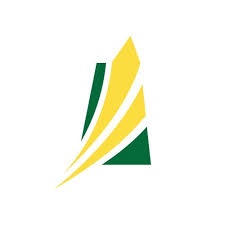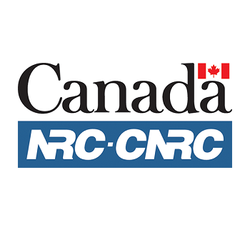
Saskatchewan Research and Development Tax Credit
At a glance
- Maximum amount : 1,000,000 $
- Up to 10% of project cost
- Unspecified
- Professional, scientific and technical services
- Saskatchewan
- For-profit business
- All revenue ranges
- All organization sizes
- Startups
Overview
Get a refundable tax credit of 10% on qualifying research and development expenditures, up to $1 million per year.
Activities funded
Eligibility
Eligibility for the Saskatchewan Research and Development (R&D) Tax Credit is determined by specific criteria related to the type of expenditures and corporation.
- The applicant must be a corporation incurring qualifying R&D expenditures in Saskatchewan.
- Saskatchewan Canadian-controlled private corporations (CCPCs) are eligible for a 10% refundable R&D tax credit for the first $1 million of qualifying expenditures annually.
- Other corporations and expenditures exceeding the annual limit are eligible for a 10% non-refundable R&D tax credit.
- The total refundable and non-refundable R&D Tax Credits claimed by a corporation must not exceed $1 million per year.
Who is eligible?
The Saskatchewan R&D Tax Credit targets corporations that incur qualifying R&D expenditures in Saskatchewan. Key eligibility points include:- Canadian-controlled private corporations (CCPCs) can apply for a refundable 10% tax credit for the first $1 million of qualifying expenditures annually.- Other corporations and expenditures over $1 million are eligible for a non-refundable 10% tax credit.- The total tax credit, refundable and non-refundable, is capped at $1 million annually for each corporation.Hence, the primary eligibility is tied to the corporation's registration and R&D spending within Saskatchewan.Eligible expenses
This grant targets private-sector investment in research and development within the province of Saskatchewan. It supports qualifying R&D expenditures by Canadian-controlled private corporations.
- Research and development activities focusing on scientific or technological advancements.
- Projects that involve innovative product or process development.
- Initiatives aimed at improving efficiency and effectiveness in existing technological systems.
- Collaborative research projects with academic or research institutions.
- Prototyping and testing of new technologies.
Eligible geographic areas
This tax credit is specifically targeted at corporations operating within the province of Saskatchewan. Eligible companies must have qualifying R&D expenditures incurred in this region.
- Corporations located within the province of Saskatchewan.
How to apply
Determine Eligibility
- Verify if your corporation qualifies as a Saskatchewan Canadian-controlled private corporation (CCPC) for the refundable tax credit.
- Ensure that your R&D expenditures are qualifying expenditures as per the tax credit guidelines.
Complete CRA Schedule 403
- Obtain Schedule 403 from the Canada Revenue Agency (CRA).
- Fill out Schedule 403 with details of your qualifying R&D expenditures.
Prepare Corporate Income Tax Return
Submit Tax Return
- Submit the completed Schedule 403 along with your corporate income tax return to the CRA.
- Ensure submission is done before the tax filing deadline to claim the tax credit.
Additional information
The Saskatchewan Research and Development (R&D) Tax Credit is aimed at incentivizing private-sector R&D investments in Saskatchewan. The tax credit applies to qualifying R&D expenditures by corporations in Saskatchewan.
- Saskatchewan Canadian-controlled private corporations (CCPCs) can claim a 10% refundable R&D tax credit for the first $1 million annual qualifying expenditures made on or after April 1, 2017.
- Qualifying R&D expenditures exceeding the annual limit, along with those by other corporations, are eligible for a 10% non-refundable R&D Tax Credit.
- The total refundable and non-refundable R&D Tax Credits that may be claimed by a corporation are capped at $1 million per year.
- Tax Credit legislation is detailed in Section 63.4 of The Income Tax Act, 2000.
- To claim the tax credit, corporations need to complete Schedule 403 from the Canada Revenue Agency (CRA) and submit it along with their annual Saskatchewan corporate income tax return.
Contacts
Frequently Asked Questions about the Saskatchewan Research and Development Tax Credit Program
What is the Saskatchewan Research and Development Tax Credit?
How much funding can be received?
What expenses are eligible under Saskatchewan Research and Development Tax Credit?
What is the deadline to apply?
Is the Saskatchewan Research and Development Tax Credit a grant, loan, or tax credit?
Who are the financial supporters of the Saskatchewan Research and Development Tax Credit?
Who is eligible for the Saskatchewan Research and Development Tax Credit program?
Who can I contact for more information about the Saskatchewan Research and Development Tax Credit?
Where is the Saskatchewan Research and Development Tax Credit available?
Are startups eligible for the Saskatchewan Research and Development Tax Credit program?
More programs like this

Regional Artificial Intelligence Initiative (RAII) in the Prairie Provinces
Prairies Economic Development Canada (PrairiesCan)
NRC — Plant growth research facilities
National Research Council Canada (NRC)
Made in Saskatchewan Technology Program (MIST)
Government of Saskatchewan
Saskatchewan Technology Startup Incentive (STSI)
Government of Saskatchewan
Ag-West Bio – Technology Commercialization Investment Fund
Government of Saskatchewan
Saskatchewan Commercial Innovation Incentive (SCII)
Government of Saskatchewan
Canada-Saskatchewan Job Grant (CSJG)
Government of Saskatchewan
Saskatchewan Polytechnic
Cognit.ca
SaskTenders
Government of Saskatchewan